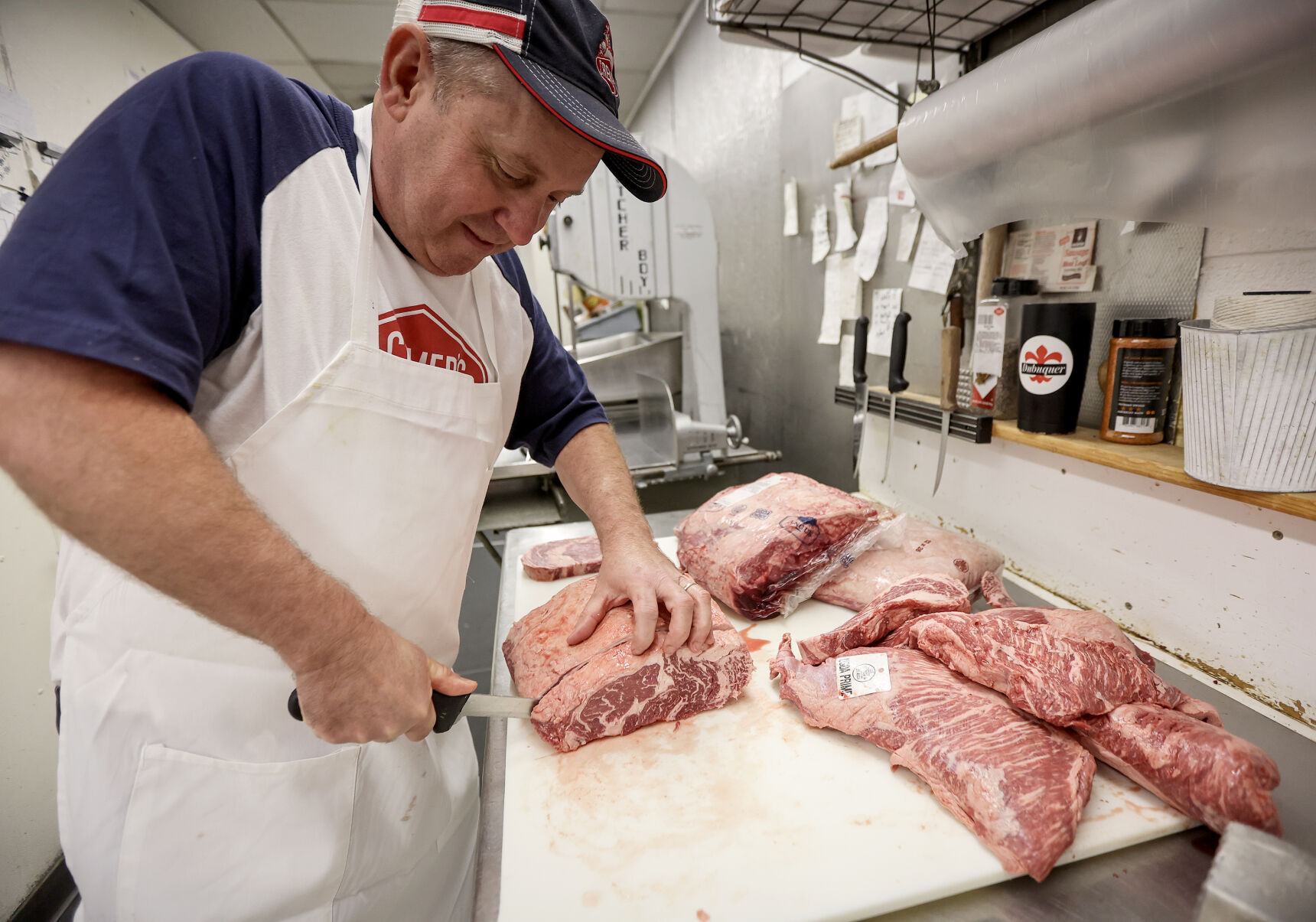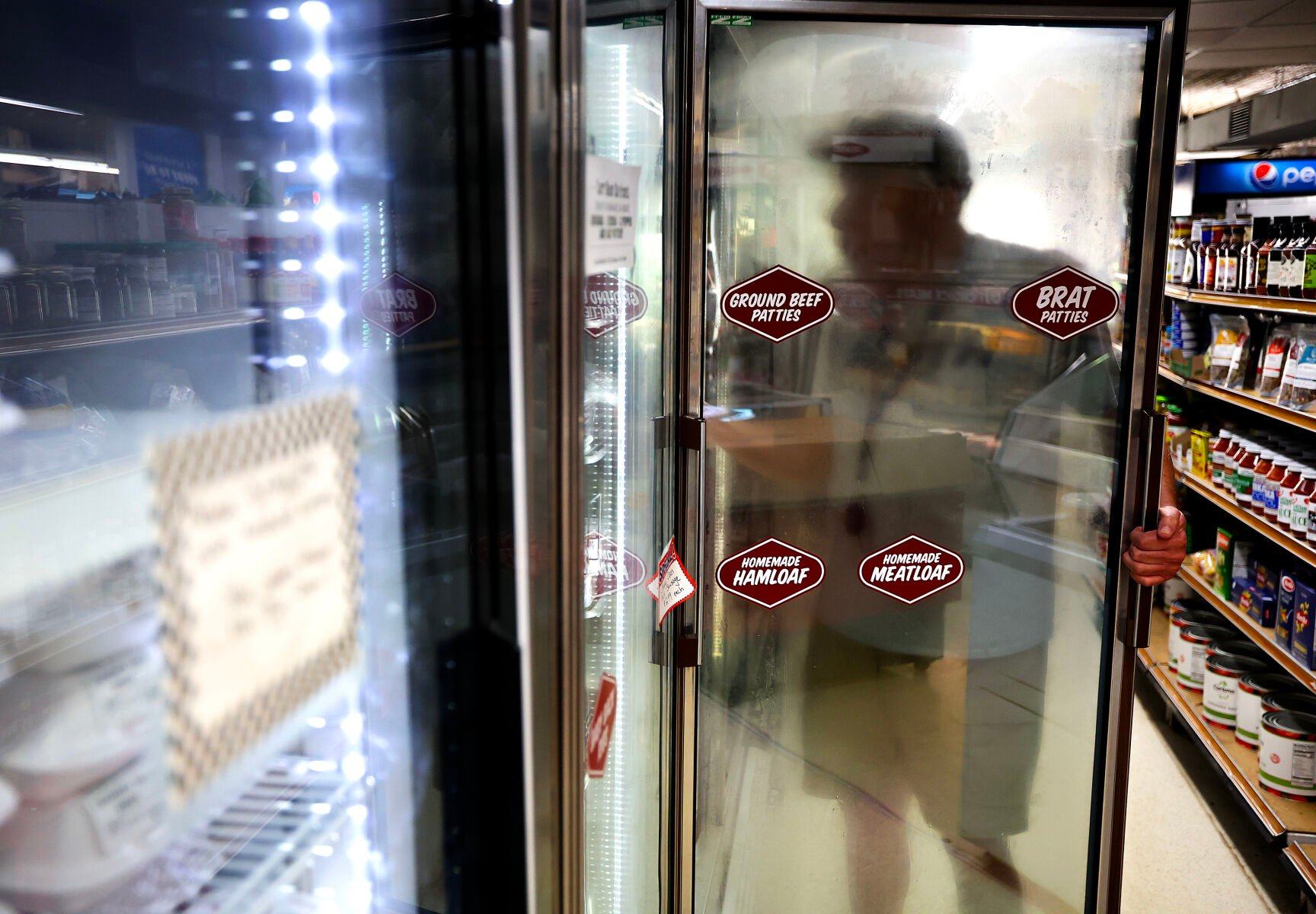Grass-fed or grain-fed?
Choice or select?
Standing at the meat counter at a local grocery store, it can be hard to know what to make of some of these terms often found on meat packaging labels. Factors such as color, age, breed and brand of a piece of meat also play a key role in determining its taste — but how do you know you’re getting exactly what you want?
As tri-state residents heat up their grills or host backyard parties this summer, the Telegraph Herald spoke with several local meat experts to get their top tips for choosing the perfect piece of meat.
Making the grade
United States Department of Agriculture inspects American meat for safety and, for beef in particular, assigns it one of eight ratings based on its quality.
The top three grades, and those most commonly discussed, are Prime, Choice and Select beef.
“All that is determined by the amount of fat that is present inside the meat, which is called marbling,” said Dan Weber, of Weber’s Processing Plant and Meats in Cuba City, Wis. “The age of the animal can determine that as well.”
Prime beef is produced from young beef cattle and has abundant marbling, while Choice beef has less marbling throughout the meat. Both types can often be cooked with dry heat, such as broiling, roasting or grilling.
Select beef is normally leaner but still fairly tender. It is also less expensive, but some cuts of Select beef might need to be marinated or braised before cooking for maximum flavor due to the lower level of fat and marbling.
“Fat is flavor, and flavor is fat,” said Jeff Cremer, of Cremer’s Meats in Dubuque.
According to the USDA website, the fourth and fifth grades of beef, Standard and Commercial, often are sold as ungraded or store-brand meat, while the bottom three grades — Utility, Cutter and Canner — are used to make ground beef and processed products.
Other types of meat aren’t graded in the same way as beef.
For example, USDA grades pork to reflect only two levels: acceptable and utility. According to the USDA website, acceptable quality pork is the only fresh pork sold in supermarkets, while utility quality is mainly used in processed products.
“That’s the difference between your pork chops and pork loins, the cuts you’d normally see in a regular meat case, and the (pork) that’s used for a Tombstone pizza or Chef Boyardee (products),” said Cremer.
Take a closer look
In addition to the grade, much about the quality of a piece of meat can be seen with the naked eye — and by reading the label.
“Generally, a fresh meat would be of a brighter color … but that brightness can come in a darker shade,” said Cremer. “In both pork and beef, if that meat has a little darker tone, it’s probably of a higher quality, which also could have something to do with the aging process.”
According to USDA, the color of meat is dictated by protein levels, the animal’s age, the amount of exercise it gets and the way the meat is stored. For example, beef not exposed to oxygen is burgundy or purple in color, but after exposure to oxygen, it turns bright red.
Weber said it’s important to note whether meat has been enhanced with solutions like marinades or tenderizers, which often are injected for flavor and convenience in cooking.
“Processed (meat) is often just loaded with water and salt to flavor it and preserve it,” he said. “That’s what makes it cheaper.”
Products that appear watery, with excess liquid — called “purge” — at the bottom of a package often have been frozen and thawed, Weber said.
“For pork, you just want to look for firmness and a good pink color,” Weber said. “You don’t want anything that’s really watery. That’s a sign that it’s either been enhanced (with additives) or stressed.”
Another common reference point on a meat-package label is what the animal was fed. For example, was it grass-fed or grain-fed?
“Almost all cattle are going to be grass-fed when they’re young, but as they mature and are closer to being ready for harvest, some are corn-fed or grain-fed,” said Luke Kerns, one of the owners of Edgewood Locker in Edgewood, Iowa.
Local meat experts say beef from cattle that eat only grass is often more lean, with less marbling, and the fat that is present often has a yellow tint.
“My opinion, personally, is that the best beef out there is going to be corn-finished to get a good marbling and a good taste, but there’s a market out there for folks who like the grass-fed,” Kerns said.







